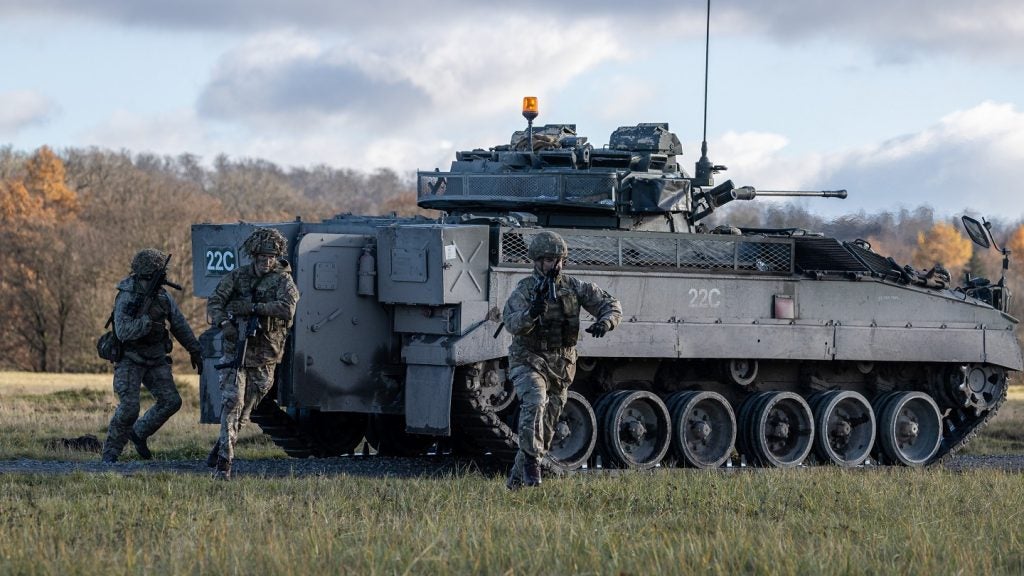The UK’s Warrior infantry fighting vehicle (IFV) could be set for a significant safety upgrade with the integration of a rear-facing camera, just two years before the platform is expected to be removed from British Army service.
In a June contracts finder notice published by the UK Government, it was disclosed that UK Defence Equipment and Support, an arm of the Ministry of Defence (MoD), was seeking hundreds of rear safety camera systems (RSCS) in order to meet “a safety critical modification”.
In the notice, it was detailed that the RSCS system would comprise of 359 units and include the following sub systems: rear camera; display control unit; cabling loom, and camera wash wipe facility.
The RSCS shall “provide the [Warrior] driver with the means to recognise terrain and personnel with a field of rearward view across the entire track width from the immediate rear of the platform”, the notice stated, with the cameras needed “to ensure the platform remains safe by design”.
There is currently no rear safety camera system fitted to the Warrior IFV, with the integration of such a system needed to ensure the platform has a rear day/night vision capability in order to adhere to health and safety legislature.
Valued at up to £20m ($25.8m), the contract has a start date of 1 September 2023, ending on 1 September 2025. The UK Warrior IFV fleet is due to be removed from service in 2025.
There goes the Warrior
In 2021, the UK Defence Command Paper announced that the British Army would retire the 359-strong Warrior IFV fleet from 2025, abandoning plans to undertake the Warrior Capability Sustainment Plan which would have seen the installation of a new turret and main weapon, among other upgrades.
Instead, the acquisition of the Boxer 8x8 mechanised infantry vehicle (MIV) would be accelerated to fill the gap left by the tracked IFV.
In 2019, the UK signed a £2.3bn deal for the procurement of 508 Boxer MIVs from Artec – a consortium of Rheinmetall and Krauss-Maffei Wegman – in troop-carrying, ambulance, command and specialist carrier variants of the vehicle.
This figure has subsequently increased, with a 16 June parliamentary written answer stating that funding had been allocated for 1,016 Boxer MIVs, against a land fleet requirement of 1,016. This figure could rise or fall, depending on the outcoming on the soon-to-be-published Defence Command Paper refresh.
The Department has allocated funding for 1,016 Boxer Mechanised Infantry vehicles against a Land Fleet Requirement of 1,305. These numbers will be kept under review in line with the Integrated Review and forthcoming Defence Command Paper Refresh.









